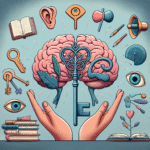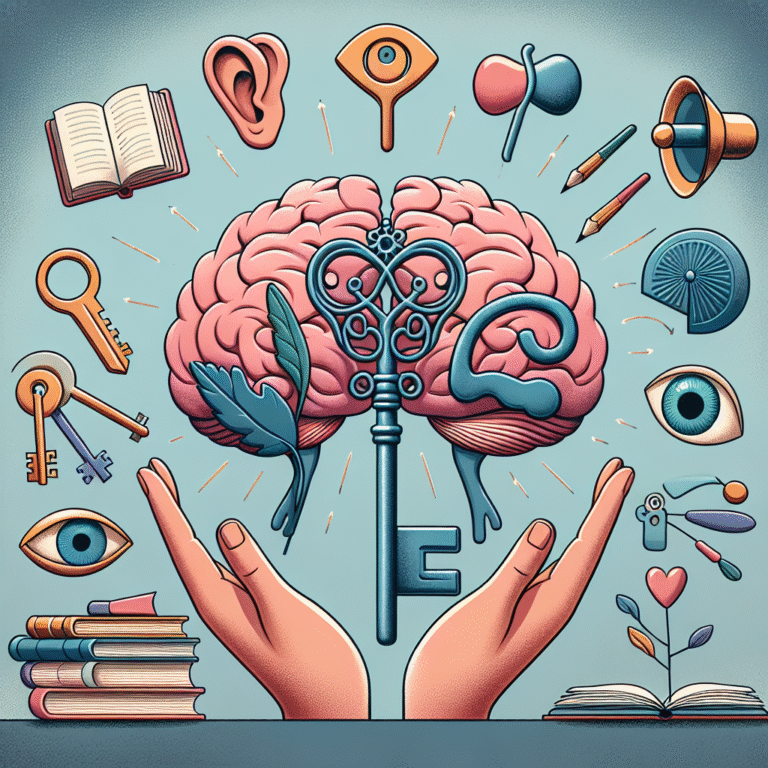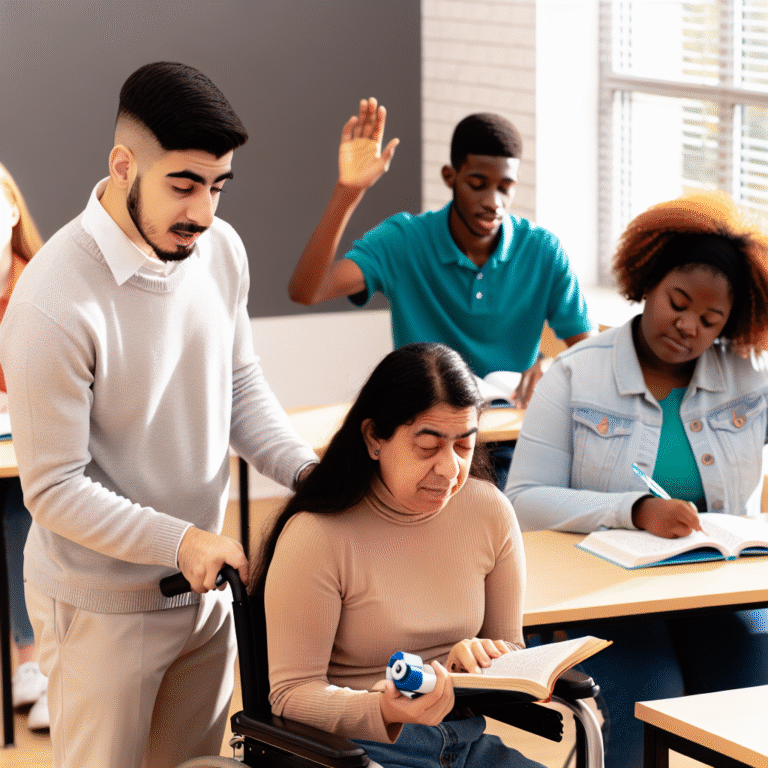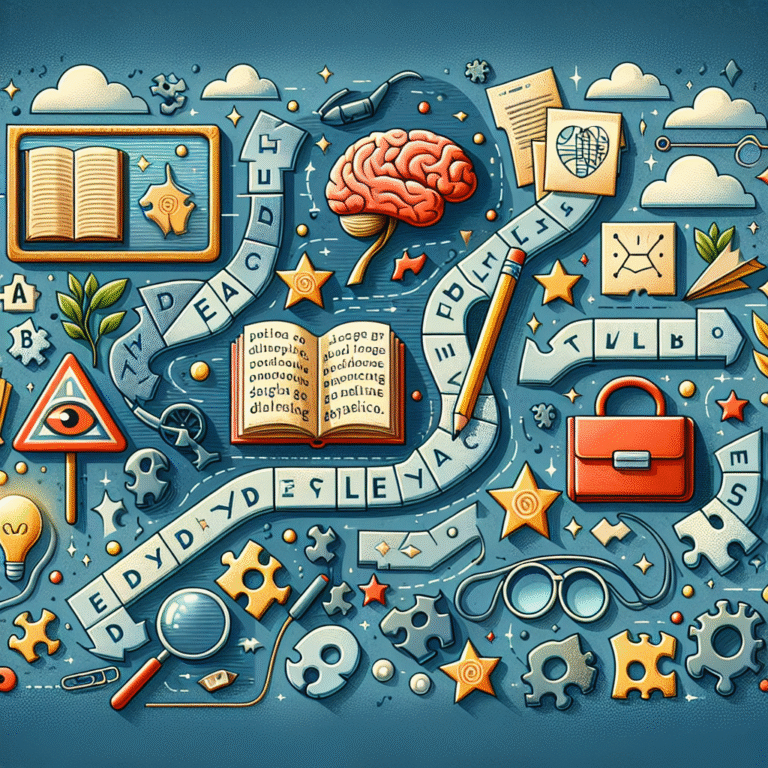
Beyond Words: Unpacking the Subtle Symptoms of Non-Verbal Learning Disabilities
Introduction
In today’s fast-paced world, we often underestimate the profound impact that non-verbal communication has on our daily interactions. From facial expressions to subtle gestures, much of our communication happens beyond the spoken word. But for some individuals, understanding and interpreting these non-verbal cues can be a significant challenge, pointing to an often-overlooked condition known as Non-Verbal Learning Disabilities (NVLD). Although academic theories and the conventional educational framework predominantly focus on verbal proficiency, the nuances of NVLD demand equal attention. This article, "Beyond Words: Unpacking the Subtle Symptoms of Non-Verbal Learning Disabilities," endeavors to shed light on this critical subject, equipping readers with a deeper understanding of NVLD, its manifestations, and how to support individuals who experience it.
Understanding Non-Verbal Learning Disabilities
What is NVLD?
Non-verbal Learning Disabilities represent a unique set of challenges that primarily affect an individual’s ability to process non-verbal information. Individuals with NVLD often excel in verbal skills and may even exhibit high intelligence, but they struggle in areas related to spatial awareness, social skills, and executive functioning. Reading body language, interpreting tone, or grasping social cues can feel daunting for them.
Key Characteristics of NVLD
Understanding the symptoms of NVLD is crucial for identification and support. Some of the key characteristics include:
Difficulty with Spatial Relations: Individuals may struggle with tasks involving direction, depth perception, and visual-motor integration.
Social Skills Challenges: Many individuals may find it challenging to navigate social situations, misunderstand others’ intentions, or misread social cues.
Emotional Regulation Issues: Difficulty understanding one’s own feelings and those of others can lead to misunderstandings and conflicts.
- Academic Challenges: While verbal skills might be strong, written work or math may pose significant obstacles due to the reliance on non-verbal processing.
By unpacking these symptoms, we unveil the complexities associated with NVLD, enriching our understanding of the affected individuals’ everyday experiences.
The Hidden Symptoms: What Lies Beneath?
When examining NVLD, it is essential to elucidate the subtle symptoms that may remain unnoticed but significantly impact the lives of those living with this disability.
Subtle Signs of NVLD:
Awkwardness in Social Settings: Individuals often appear uncomfortable in group situations or struggle to maintain eye contact.
Misinterpretation of Non-Verbal Cues: Facial expressions might go unnoticed, or individuals may misread gestures, leading to confusion in communication.
Difficulty with Organization: Challenges in managing time, which can impact academic performance and daily responsibilities, are common.
- Literal Interpretation of Language: Phrases or jokes relying on paradox may lead to misunderstanding.
Case Studies: Real-World Applications
Case Study 1: Emily’s Social Struggles
Overview: Emily is a 12-year-old girl with a gift for writing and an exceptional vocabulary. She loves to read and talk but struggles in group activities at school.
Symptoms Exhibit: While Emily can articulate her thoughts beautifully, she has difficulty deciphering social cues during conversations with peers, leading to feelings of isolation.
Analysis: Emily’s case exemplifies how strong verbal skills can mask NVLD’s significant impact on social interactions. Understanding this interaction’s subtlety is key to supporting her in building relationships.
| Emily’s Strengths | Emily’s Challenges |
|---|---|
| Excellent verbal skills | Misreading social cues |
| Creative writing | Inconsistent eye contact |
| Engaging storyteller | Difficulty interpreting body language |
Case Study 2: Mark’s Academic Journey
Overview: Mark, a 15-year-old with NVLD, excels in literature and has a deep interest in history, but struggles in mathematics and visual-spatial tasks.
Symptoms Exhibit: Mark often faces challenges in geometry due to difficulties with spatial reasoning and often misplaces homework due to poor organizational skills.
Analysis: Mark’s challenges underscore how NVLD symptoms manifest in academic contexts, emphasizing the need for tailored educational strategies that cater to individual strengths.
Strategies for Support
To assist individuals with NVLD effectively, a multi-faceted approach is essential. Parents, educators, and peers play a vital role in providing support that is understanding and accommodating.
Building Social Skills
Role-Playing: Engage in role-playing exercises to practice social interactions in a safe environment.
- Focus on Visual Aids: Use visual aids to teach non-verbal cues and help contextualize social situations, aiding comprehension.
Academic Accommodations
Tailored Learning Plans: Design personalized educational strategies that leverage the individual’s verbal strengths while addressing specific challenges.
- Organizational Tools: Introduce planners or digital tools to help bolstered organizational skills in schoolwork and daily tasks.
Enhancing Emotional Resilience
Social Stories: Use social stories to help individuals predict and navigate social encounters.
- Counseling: Seek professional support to address emotional regulation and bolster self-awareness regarding feelings and social situations.
Conclusion
Non-Verbal Learning Disabilities often lie "beyond words." The profound impact of NVLD on individuals can be subtle yet significant, shaping their academic journey and social experiences alike. By unpacking the symptoms and manifestations of NVLD, we gain insight into the complexity of communication and the importance of tailored strategies for support. Recognizing that those with NVLD have rich capabilities, primarily in verbal expression, encourages a more nuanced approach to understanding and assisting them.
Key Takeaway
To foster inclusivity and understanding, it is imperative that we look beyond traditional metrics of intelligence and communication. Individuals with NVLD have much to contribute, and by embracing their unique perspectives, we enhance our communities and foster diverse environments where every voice is valued.
FAQs About Non-Verbal Learning Disabilities
What causes Non-Verbal Learning Disabilities?
NVLD is neurological in nature, and while the exact causes are unknown, it may stem from genetic factors or differences in brain development.How can NVLD be diagnosed?
A comprehensive evaluation by a qualified psychologist or specialist, including cognitive assessments and observations, is essential for diagnosing NVLD.Can individuals with NVLD lead successful lives?
Absolutely! Many individuals with NVLD excel in specific areas when provided with appropriate support and accommodations.Is there a cure for NVLD?
Currently, there is no "cure" for NVLD, but early intervention and tailored educational strategies can improve outcomes significantly.What resources are available for families dealing with NVLD?
There are numerous resources available, including support groups, educational programs, and specialized counseling services tailored to NVLD.- How can I help a friend or family member with NVLD?
Show understanding and patience, facilitate conversations, and encourage them. Providing assistance with organization and social interactions can make a difference.
In conclusion, understanding Non-Verbal Learning Disabilities not only empowers individuals but enriches our collective experience. By delving into "Beyond Words: Unpacking the Subtle Symptoms of Non-Verbal Learning Disabilities," we pave the way for informed support and acceptance for those who navigate their worlds with unique challenges.






